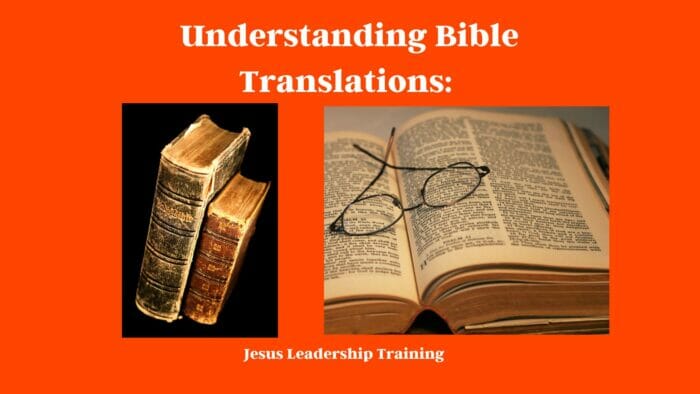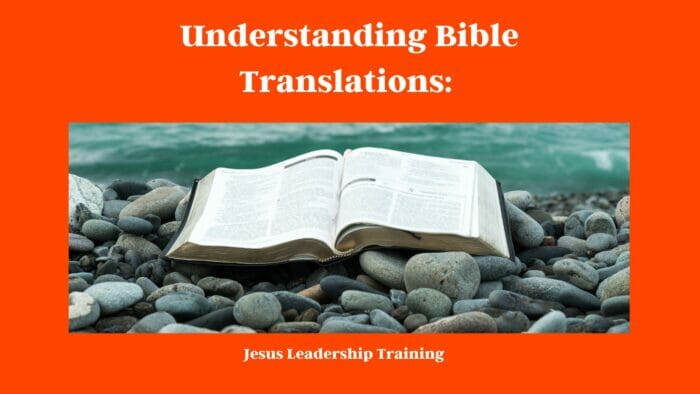Table of Contents
The Bible and Its Multitude of Voices
Whether you’re a newbie in the faith or a veteran Bible reader, picking the right Bible can seem like finding a needle in a haystack. What with the number of translations and versions out there, it’s enough to make your head spin, isn’t it? Fear not, dear reader. This article is your compass, aimed to navigate you through the labyrinthine world of “Translations and Versions: Choosing the Right Bible for You.
Translations and Versions: Choosing the Right Bible for You
Understanding Bible Translations: A Dip into History
Bible translations are as old as the Bible itself. Over centuries, countless dedicated scholars have rendered this sacred text into a variety of languages, tailoring it to cultural context and evolving linguistic styles.
Decoding the Versions: A Matter of Perspective
Think of versions as different flavors of your favorite dish – all hold the essence but offer a unique taste. From King James Version (KJV) to the New International Version (NIV), each has its unique charm and suitability.

Choosing the Right Bible: Factors to Consider
Choosing the right Bible is not just about picking up the nearest one off the shelf. There are several factors to consider, from readability and understanding to alignment with your faith journey.
Your Purpose: Study or Devotion?
The purpose of your Bible use is crucial. Are you studying theology, or are you looking for spiritual nourishment? There are Bibles best suited for each purpose.
Your Language: Modern or Traditional?
Do you prefer the eloquent language of yesteryears or contemporary wording? Each version has its dialect, be it the classic thees and thous or the modern you and yours.
The Goliaths of Translations: A Close Look at Popular Versions
Let’s dissect a few major versions to understand their unique selling points and potential drawbacks. Knowing these will aid in your pursuit of the right Bible.
King James Version (KJV): The Old Guard
A staple of Bible translations, the KJV, is famous for its classic language and poetic feel. However, its older English can sometimes pose understanding challenges.

New International Version (NIV): The Balanced Approach
NIV strikes a balance between literal accuracy and readability, making it a go-to choice for many. It’s the middle ground, the Goldilocks of Bible versions if you will.
Lesser-Known Versions: Diamonds in the Rough
While popular versions get the limelight, some lesser-known versions offer unique perspectives and are worth a look.
The Message (MSG): Modern Paraphrasing
This Bible version captures the spirit of the original text while presenting it in a relatable, modern language, much like a friend explaining it to you.
New Living Translation (NLT): Ease of Understanding
The NLT focuses on making the message understandable to the contemporary reader, with natural, flowing language.

FAQs
- What’s the difference between a translation and a version of the Bible? Translations refer to the process of changing the Bible from its original languages (Hebrew, Greek, and Aramaic) into another, while versions are variations within a specific translation, with slight differences in phrasing or interpretation.
- Is there a ‘best’ version of the Bible? The ‘best’ version is subjective and depends on your personal needs, understanding, and purpose of reading.
- Can I use different versions for different purposes? Absolutely! You might find a study Bible handy for deep theological explorations, while a paraphrased version could be great for daily devotionals.
- How do I know if a Bible version is reliable? Look for versions translated by a team of scholars, preferably from different theological backgrounds. This ensures a balanced translation.
- Are there Bibles for children or beginners? Yes, there are versions designed for different age groups and levels of understanding. Children’s Bibles often include illustrations and simplified language.
- Do digital Bibles offer different versions too? Digital Bibles often offer a variety of versions to choose from and can be a practical choice if you want to compare different versions.
Conclusion: Your Personal Guide
Navigating the landscape of Bible translations and versions can be challenging, but remember – there’s no one-size-fits-all. The best version for you is the one that brings the Bible to life, making it a living, breathing guide for your spiritual journey. Happy exploring, and may you find the version that speaks to your heart.




